Articles
- Page Path
- HOME > J Powder Mater > Volume 31(6); 2024 > Article
-
Research Article
- Design of Conductive Inks Containing Carbon Black and Silver Nanowires for Patternable Screen-Printing on Fabrics
- Seokhwan Kim1,2,3, Geumseong Lee1,2,3, Jinwoo Park4, Dahye Shin4, Ki-Il Park1,2,3, Kyoung Jin Jung4,*, Yuho Min1,2,3,*
-
Journal of Powder Materials 2024;31(6):500-507.
DOI: https://doi.org/10.4150/jpm.2024.00409
Published online: December 31, 2024
1Department of Materials Science and Metallurgical Engineering, Kyungpook National University, Daegu, 41566, Republic of Korea
2Innovative Semiconductor Education and Research Center for Future Mobility, Kyungpook National University, Daegu, 41566, Republic of Korea
3Research Institute of Automotive Parts and Materials, Kyungpook National University, Daegu, 41566, Republic of Korea
4Defense Materials & Energy Technology Center Team 1, Agency for Defense Development, Daejeon, 34186, Republic of Korea
- *Corresponding author: Kyoung Jin Jung (E-mail: charley@add.re.kr); Yuho Min (E-mail: yuhomin@knu.ac.kr)
© The Korean Powder Metallurgy & Materials Institute
This is an Open Access article distributed under the terms of the Creative Commons Attribution Non-Commercial License (http://creativecommons.org/licenses/by-nc/4.0/) which permits unrestricted non-commercial use, distribution, and reproduction in any medium, provided the original work is properly cited.
- 1,465 Views
- 41 Download
- 1 Crossref
Abstract
- This study developed conductive inks composed of carbon black (CB) and silver nanowires (Ag NWs) for cost-effective screen-printing on fabrics. The Ag NW density within the CB matrix was precisely controlled, achieving tunable electrical conductivity with minimal Ag NW usage. The resulting inks were successfully patterned into shapes such as square grids and circles on textile surfaces, demonstrating excellent conductivity and fidelity. Adding 19.9 wt% Ag NWs reduced sheet resistance by ~92% compared to CB-only inks, highlighting the effectiveness and potential of this hybrid approach for cost-effective, high-performance textile-based electronics. The one-dimensional morphology of Ag NWs facilitated the formation of conductive percolation networks, creating efficient electron pathways within the CB matrix even at low loadings. This work advances the field of CB-based conductive inks and provides a scalable and practical method for producing functional, patterned electronic textiles.
- The development of flexible, fabric-based electronics has attracted significant interest due to their potential applications in wearable technology, smart textiles, and integrated sensors [1]. Solution-based conductive inks play a crucial role in realizing these applications, enabling direct circuit printing onto fabric substrates with advantages such as low cost, ease of patterning, and compatibility with existing manufacturing processes for flexible electronics [2]. Printing techniques like screen printing, inkjet, and gravure are essential for efficiently depositing conductive materials onto textiles, each offering unique benefits [3]. Screen printing, in particular, is well-suited for fabric-based electronics due to its adaptability, cost-effectiveness, and suitability for large-scale production with precise control over ink thickness and pattern [4].
- Conductive inks typically contain conductive filers, solvents, binders, dispersants, and additives. The formulation of these inks significantly influences their electrical conductivity, mechanical durability, chemical stability, patterning precision, and compatibility with coating methods [5]. A primary challenge in the field is the high cost of conductive inks, largely driven by the cost of conductive fillers, typically including materials like CNT, graphene, and metals (Ag, Au, etc.) [6]. Carbon-based conductive fillers, such as graphene and CNT, exhibit high carrier mobility, thermal conductivity, tensile strength, and resistance to electromigration, making them suitable for flexible electronics [7]. However, their high cost and dispersion issues remain unresolved [8]. Metal-based fillers, such as Ag nanoparticles, offer high conductivity and stability but are relatively expensive, which limits their use in large-scale or disposable applications. More affordable alternatives, like Cu nanoparticles, are susceptible to oxidation, requiring protective measures such as inert processing conditions and surface coatings [9]. Conductive polymers, including polyaniline (PANI), polypyrrole (PPy), poly(3,4-ethylenedioxythiophene) (PEDOT), and poly (3,4-ethylenedioxythiophene)/poly (styrene sulfonate) (PEDPT/PSS), have also been explored. Still, their environmental sensitivity, lower conductivity, and complex synthesis processes limit their broader application in durable electronics [10].
- Given these cost constraints, carbon black (CB) serves as an effective, low-cost, and environmentally stable conductive filler with a high surface area [11]. However, its relatively lower conductivity and higher loading requirements in ink formulations remain challenging [12]. The use of hybrid ink formulations to enhance conductivity has been consistently proposed [13]. To address these issues, this study develops a cost-effective CB-based conductive ink incorporating a small amount of Ag nanowires (Ag NWs). By carefully controlling the density of Ag NWs within the CB matrix, we achieve stable, tunable conductivity at a fraction of the cost of pure silver inks. The one-dimensional (1D), high-aspect-ratio structure of Ag NWs facilitates electron flow, enhancing conductivity at low loadings. Screen printing enables precise pattering of these inks on fabric, offering a promising approach for high-resolution, scalable textile-based electronics. This research advances CB-based conductive inks as a cost-effective, scalable, and high-performance solution for fabric-compatible electronics. Additionally, comparing the prices of conductive materials, which constitute the majority of conductive inks, highlights the economic advantages of the ink proposed in this study. Traditional silver nanoparticle-based inks typically contain 10–90% silver nanoparticles, whereas our developed carbon black-based ink contains approximately 15%. According to market data, silver nanoparticles are priced at approximately $1,000 per kg (based on LT-Metal, South Korea), while the carbon black powder we used is priced at $140 per kg. Even at the same weight percentage, this results in a cost difference of over seven times, demonstrating that carbon black-based inks can provide significant economic advantages. This cost-efficiency further underscores the potential of our ink formulation for practical applications.
1. Introduction
- 2.1 Materials
- The chemicals used in this study included carbon black (Dae Myung Chemical), AgNO3 (Sigma Aldrich, 99.0%), poly(vinylpyrrolidone) (PVP, Sigma Aldrich, Mw=55000 g/mol), propylene glycol (PG, Dae Jung, 99%), 1-butyl-3-methylimidazolium chloride (BMIM-Cl, Sigma-Aldrich), polymeric binder (BNMR-215-40, BN Chemical), dimethyl glutarate (DG, Sigma Aldrich), and ethyl carbitol acetate (ECA, Dae Jung). DI-water was obtained using an 18-MQ (SHRO-plus DI) system. Polyurethane-coated fabrics were provided by INNO CHEM.
- 2.2 Preparation of Carbon Black-Based Ink
- Carbon black-based conductive inks were prepared by ball-milling a mixture of DG (10 mL), ECA (10 mL), polymeric binder (10 mL), and carbon black at different weight percentages (15 wt%, 20 wt%, and 25 wt%). The specific amounts of carbon black used for each formulation were 5.3 g, 7.5 g, and 10 g, respectively. The prepared CB-based inks were denoted as CB15, CB20, and CB25, corresponding to their respective CB weight percentages.
- 2.3 Synthesis of Ag Nanowires
- Ag nanowires were synthesized by modifying the method reported previously [14]. A solution of PVP (4.17 g) and BMIM-Cl (0.13 g) was dissolved in 440 mL of PG and heated to 90 °C under magnetic stirring. Separately, a solution of AgNO3 (3.56 g) in 21 mL of PG was prepared. Once the PVP/BMIM-Cl solution reached a stable temperature, the AgNO3 solution was rapidly injected, resulting in a color change from transparent to yellow, orange, and finally gray-green. The reaction proceeded at 90 °C for 24 h, followed by cooling to 25 °C. Ag nanowires were collected by centrifugation at 4000 rpm for 10 min and washed twice with ethyl alcohol and acetone to remove unreacted chemicals.
- 2.4 Preparation of Inks with Carbon Black and Ag Nanowires
- CB15 inks were mixed with Ag nanowires at varying weight percentages (7.7, 14.2, and 19.9 wt%) using an overhead stirrer at 250 rpm for 4 h. The resulting mixture inks were labeled CB92.3Ag7.7, CB85.8Ag14.2, and CB80.1Ag19.9, corresponding to the weight percentages of Ag nanowires.
- 2.5 Screen Printing of Conductive Inks on Fabrics
- Polyurethane-coated fabrics (50 denier) were cut into 10 cm x 10 cm squares. The as-prepared CB-based and mixed CB/Ag NWs inks were screen-printed onto fabric surfaces using a stainless steel screen with a mech density of 325. After printing, the fabrics were dried at 150 °C for 10 min. Two pattern types were printed: grids with a line width of 0.5 mm and 9 mm spacing, and circles with a diameter of 10 mm.
- 2.6 Characterization
- The morphologies of carbon black powders, Ag nanowires, and films were investigated using a JSM-IT700HR (JEOL) scanning electron microscope (SEM). Energy-dispersive X-ray spectroscopy (EDS) elemental mapping images were acquired using an EDS spectrometer attached to the SEM. X-ray diffraction (XRD) analysis was performed using a Rigaku MiniFlex 600 instrument with Cu Kα radiation (λ= 0.1542 nm) to examine the crystal structures. The sheet resistances of the printed patterns were measured using a four-point probe method with an ARMS 200C sheet resistance measurement system (DASOLENG Co., Korea). Ink viscosities were measured with an MCR702 rheometer (Anton Paar).
2. Experimental Section
- Fig. 1 illustrates the experimental procedure, detailing the steps from preparing conductive inks to screen-printing them onto fabric substrates. Carbon black (CB)-based inks were prepared by ball-milling a mixture of solvents, polymer binders, and CB powders at weight percentages of 15 wt%, 20 wt%, and 25 wt%. To enhance conductivity, Ag NWs, synthesized via the polyol method, were incorporated into the CB-based inks at weight percentages of 7.7 wt%, 14.2 wt%, and 19.9 wt% and thoroughly mixed by overhead stirring. The CB-based and mixed CB/Ag NW inks were then screen-printed onto fabrics using grid and circular pattern masks (see Experimental Section). Ball-milling was essential for achieving a homogeneous dispersion of CB powders within the ink and high CB loadings. However, ball-milling is unsuitable for mixing CB-based inks with Ag NWs, as it can damage the one-dimensional structures of the nanowires, leading to short nanorods or particles. The mixing methods adopted in this study offer a simple, scalable approach for the large-scale production of conductive inks. However, maintaining uniform dispersion of carbon black and Ag NWs in large-scale production is crucial to preserve the ink’s conductivity and performance. Therefore, advanced dispersion technologies will be required to address this challenge, especially for scaled-up production effectively.
- To determine the optimal loading conditions for carbon black, ink stability and the sheet resistance of films were evaluated across various CB concentrations. Fig. 2(a) presents digital photo images of as-prepared CB inks with different CB loadings: CB15, CB20, and CB25. The CB25 ink exhibited highly viscous, slurry-like behavior with visible CB agglomerates, rendering it unsuitable for screen printing. Consequently, the sheet resistance of films prepared with CB25 ink could not be measured. Although CB20 ink exhibited lower sheet resistance compared to the other formulations, it failed to produce uniform patterns when combined with Ag NWs, resulting in cracking through the printed patterns on fabrics (not shown here). In contrast, CB15 ink demonstrated uniform dispersion and moderate sheet resistance (~1900 Ω/□), as illustrated in Fig. 2(b). Based on these observations, CB15 ink was selected for further formulation with Ag NWs, as its sheet resistance remains too high for practical applications, requiring further enhancement in electrical conductivity.
- To address this issue, Ag NWs were incorporated as a co-conductive filler, contributing to conductivity improvement through their unique one-dimensional morphology and conductive percolation network formation, even at low concentrations. Fig. 3 exhibits the as-synthesized Ag NWs with average dimensions of 29.7 μm in length and 65 nm in diameter. The inset of Fig. 3(a) highlights the pentagonal edge structure, which serves as a seed for the growth of 1D Ag NW as reported in previous studies [15]. The high-aspect-ratio structure of Ag NWs promotes efficient electron pathways within the ink matrix, reducing resistance within the conductive network. Even in small amounts, Ag NWs in the CB matrix establish a conductive percolation network, significantly enhancing conductivity with minimal NW content.
- The crystal structures of CB powders, Ag NWs, and their mixtures in the CB80.1Ag19.9 ink were analyzed by XRD (Fig. 4 (a)). The XRD pattern of CB powders (black pattern) exhibits two broad peaks at around 24° and 44° of 2θ, corresponding to the (002) and (100) Bragg peaks, which signify an amorphous nature or the presence of randomly oriented small graphitic zones [16] On the other hand, Ag NWs showed strong, narrow peaks (red pattern) at around 36.5°, 42.3°, 63.7°, 76.6°, and 82° of 2θ, corresponding to the (111), (200), (220), (311), and (222) planes of metallic Ag with an FCC structure [17]. In CB80.1Ag19.9 (blue pattern) as a representative mixed ink, the amorphous nature of CB powders and the FCC structure of Ag NWs were evident, although Ag NW peaks had lower relative intensities due to their smaller loading. SEM images and corresponding EDS mappings for elemental C and Ag (Fig. 4 (b)-(c)), confirmed the spherical shape of CB powders, the 1D morphology of Ag NWs, and the spatial elemental distribution of both within the nanostructures.
- Three different formulations of mixed CB/Ag NW inks were prepared by adding various Ag NW percentages to the CB15 inks such as CB100Ag0 (no Ag NWs), CB92.3Ag7.7, CB85.8Ag14.2, and CB80.1Ag19.9. These mixed inks were screen-printed onto fabric squares (15 cm × 15 cm) in grid patterns (0.5 mm line width, 9 mm spacing) and circular patterns (10 mm diameter, 10 mm spacing) (Fig. 5). All patterns showed dense coverage, with grid patterns exhibiting clear connections, demonstrating the suitability of mixed inks for forming various screen-printed patterns. Top-view SEM images of circular patterns reveal increased Ag NW density and connectivity with higher Ag NW content (Fig. 6). In particular, the Ag NWs were uniformly dispersed and embedded in the CB80.1Ag19.9 sample, leading to a continuous conducting network, which potentially reduces the sheet resistance.
- The resulting sheet resistance (Rs) of four patterns was measured using a four-point probe method as shown in Fig. 7 (a). As expected, the Rs values dramatically decreased with increasing Ag NW content in the mixed inks. Notably, the Rs of CB80.1Ag19.9 samples decreased by approximately 92%, 86%, and 78% compared to those of CB100Ag0, CB92.3Ag07.7, and CB85.8Ag14.2 samples, respectively. The dramatic decrease in Rs can be understood by a percolation model for randomly distributed nanowires. The Rs of a nanowire film has the following relation to the nanowire density (N):
- Where Nc is the critical nanowire density required for conduction, and α is a critical exponent, with values of 1.33 for 2D networks and 1.94 for 3D networks [18-21] Based on this relationship, Rs decreases significantly with increasing nanowires density. The quantities of Ag NW were estimated by dividing the total Ag weight in each ink by each nanowire’s weight (Fig. 7 (b)). The weight of each nanowire was calculated using the density and volume of each nanowire based on the measured average diameter and length. Although the effect of the CB matrix is not directly included in this percolation model, it likely has minimal impact due to its spherical shape and lower conductivity. The Nc of nanowires with a length of l can be estimated as follows [21]:
- Using the equation and the average length of 29.7 μm, the value of Nc was determined to be approximately 0.0065/μm2. Based on the circular pattern area and the concentration of Ag NWs in each ink, the calculated N values increased from 0.068, 0.15, and 0.22/μm2 for CB92.3Ag7.7, CB85.8Ag14.2, and CB80.1Ag19.9 samples, respectively. Consequently, the sheet resistance decreased as the conductive percolation networks expanded with higher Ag loading. The Ag NWs network forms as the NWs overlap and connect, creating continuous conductive paths across the printed ink layer (Fig. 7 (c)). In particular, this percolation effect reduces the need for high Ag NWs content while achieving significant conductivity enhancement of the CB matrix. The result is a stable, low-resistance network that effectively bridges gaps within the CB matrix. It should be noted that increasing the amounts of Ag nanowires can further reduce the Rs values, but it also increases the viscosity of the inks, as observed with the CB-based ink at higher CB loadings (CB25). This can lead to difficulties in screen printing and non-uniform film formation. Fig. 7(d) shows the viscosity increase in mixed inks as Ag NW content rises. Therefore, a balance between conductivity and printability must be carefully controlled, along with considerations such as cost and scalability.
3. Results and Discussion
- This study presents the development of cost-effective, CB-based conductive inks incorporating small amounts of Ag nanowires (Ag NWs) for patternable screen-printing on fabrics. The CB matrix provides a stable, low-cost conductive base, while the addition of Ag NWs significantly enhances conductivity due to their one-dimensional morphology and high aspect ratio, which facilitate effective electron pathways through percolation. By controlling Ag NW content, the inks achieve tunable conductivity without compromising cost-efficiency. Screen printing enabled precise patterning of these inks into grid and circular forms on polyurethane-coated fabric, demonstrating high-resolution, scalable applications for flexible and wearable electronics. The CB80.1Ag19.9 ink formulation, with optimal Ag NW loading, achieved a dramatic reduction in sheet resistance, establishing continuous conductive networks within the CB matrix. This conductive percolation network efficiently bridges gaps in the CB structure, resulting in low-resistance, durable patterns suitable for practical applications. While increasing Ag NW content can further reduce sheet resistance, it also raises ink viscosity, potentially impacting print quality. This balance between conductivity and printability underscores the utility of CB/Ag NW inks for flexible electronics. Overall, this work advances the potential of CB-based inks for fabric-compatible electronics by addressing key challenges of cost, conductivity, and scalability, offering a promising pathway for the large-scale production of conductive fabrics for wearable technologies and smart textiles.
4. Conclusion
-
Funding
This study was supported by a grant from the Agency for Defense Development of Korea (project No. 915050201).
-
Conflict of Interest
K.-I Park serves as an editor of the Journal of Powder Materials editing but has no role in publishing this article. Except for that, the authors declare no competing financial interests or personal relationships.
-
Author Information and Contribution
S. Kim: M.S. student; Conceptualization, Methodology, Investigation, Data curation, Visualization, Writing–original draft
G. Lee: Undergraduate; Formal analysis, Investigation
J. Park: Senior Researcher; Resources, Validation
D. Shin: Senior Researcher; Methodology, Validation
K. I. Park: Professor; Conceptualization, Validation
K. J. Jung: Principal Researcher; Conceptualization, Writing–review & editing, Supervision, Resources
Y. Min: Professor; Conceptualization, Validation, Writing–review & editing, Supervision, Resources
-
Acknowledgement
None.
Article information


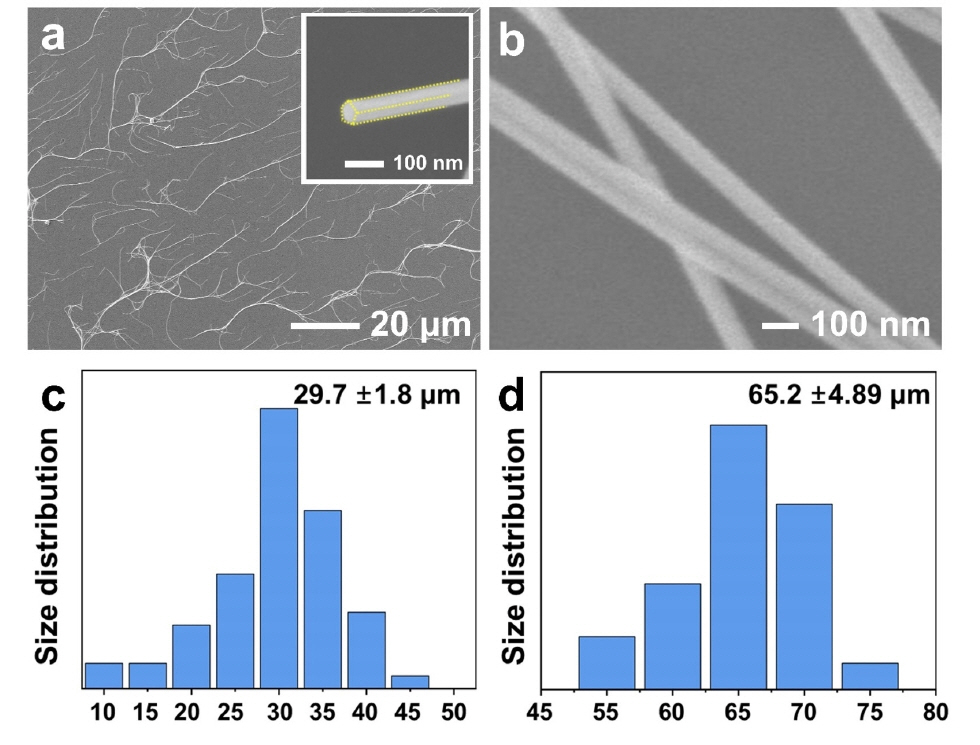
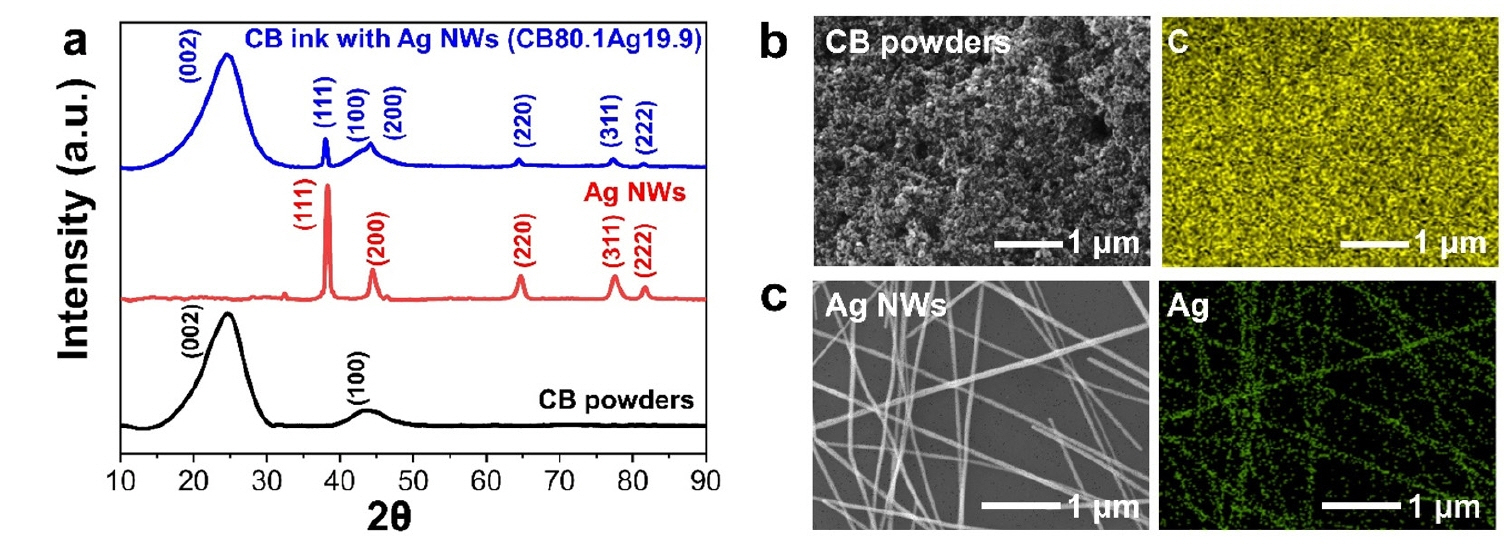
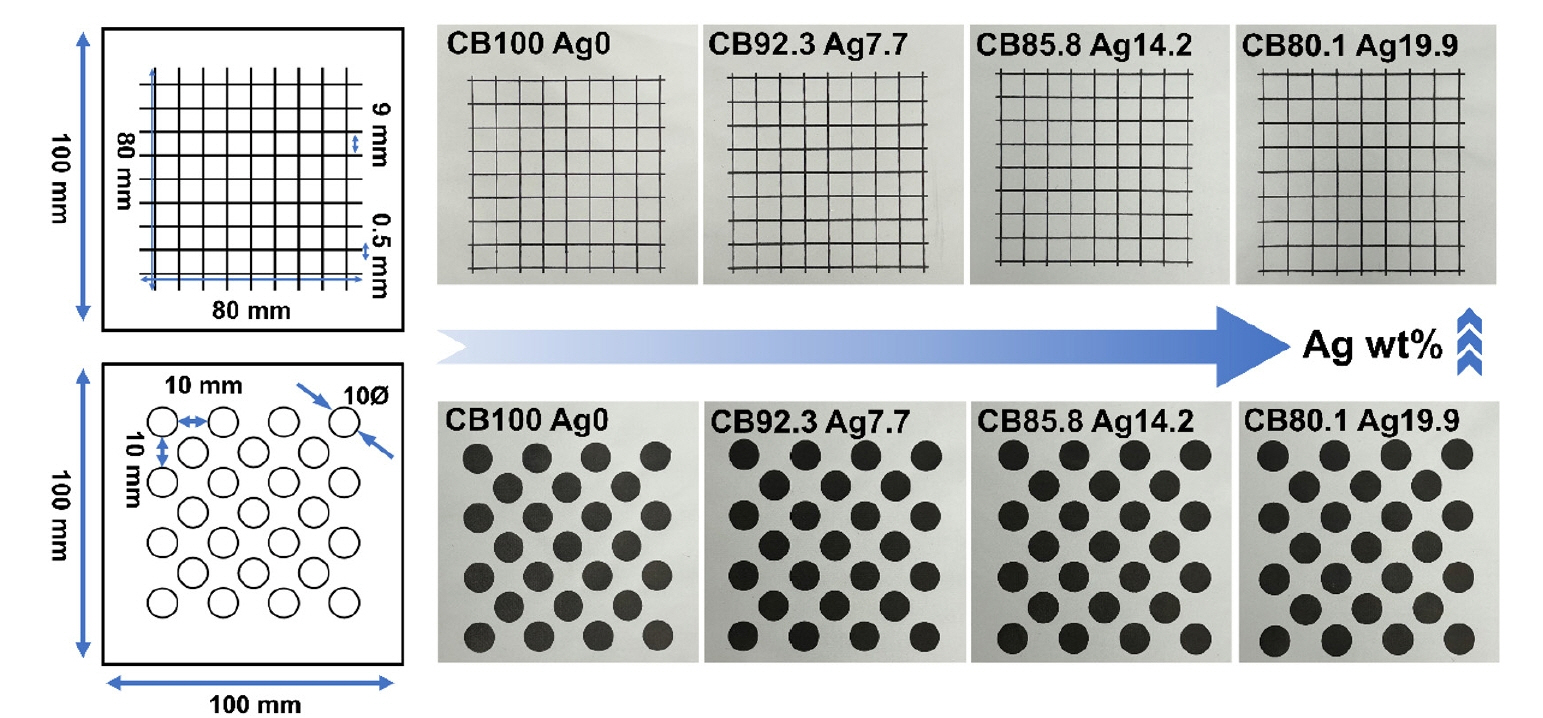
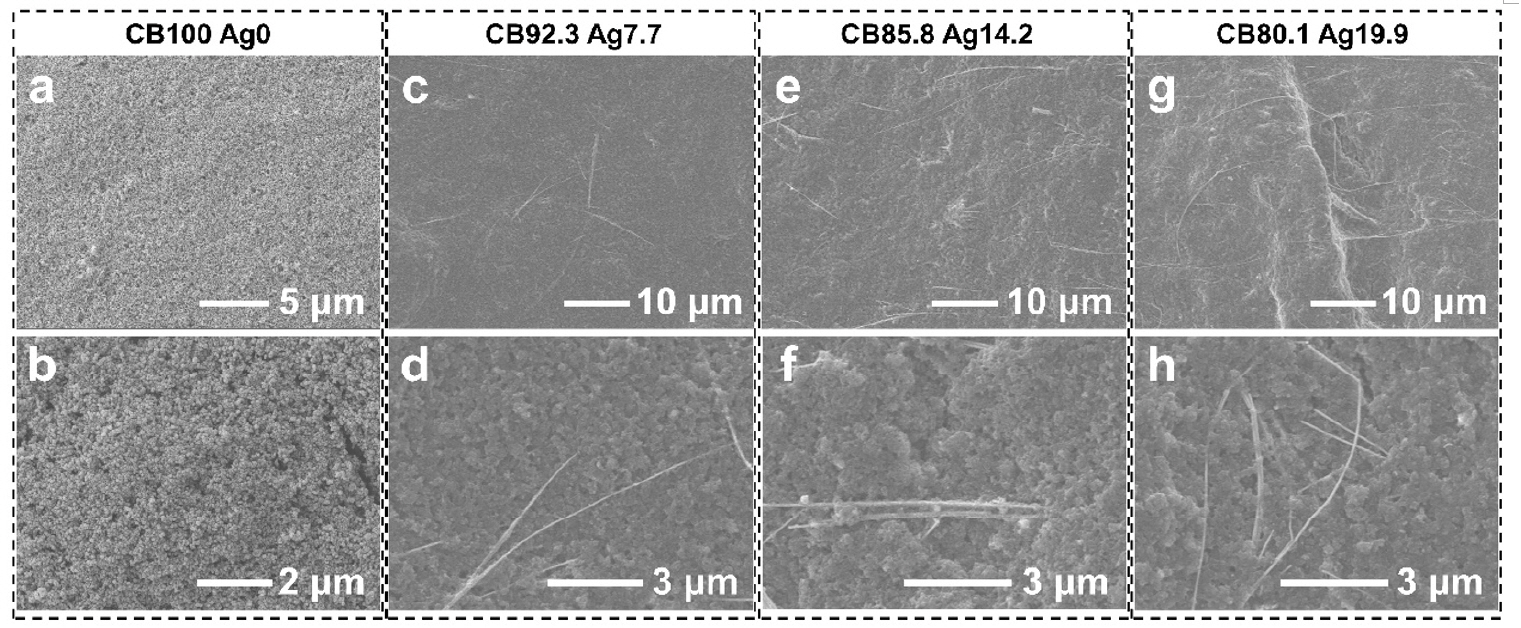
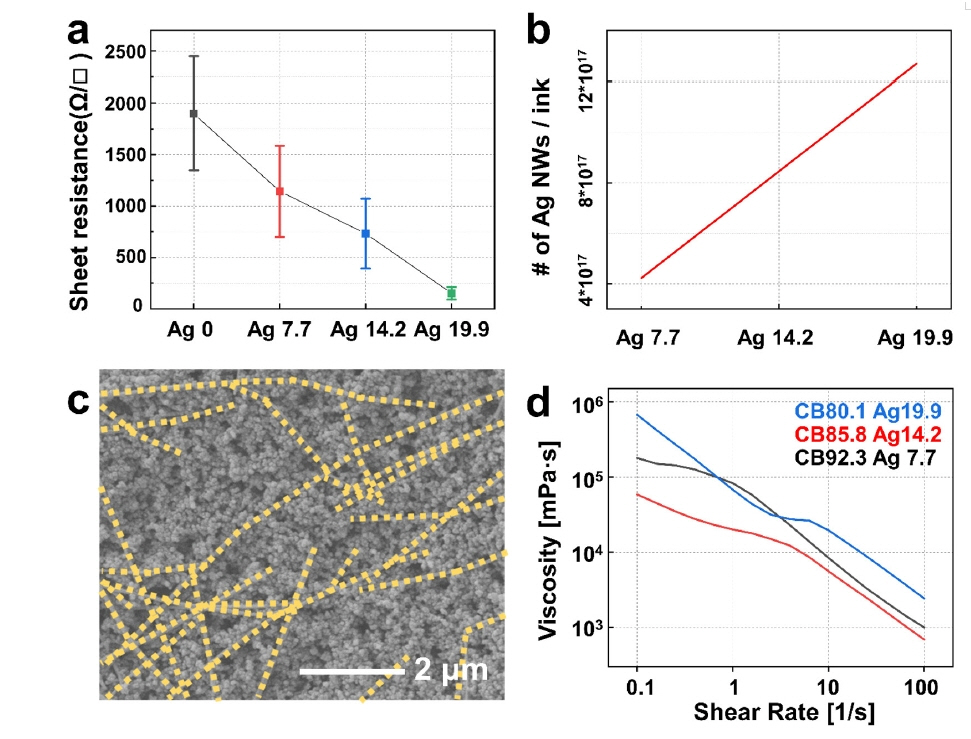
- 1. K. Dong, X. Peng and Z. L. Wang: Adv. Mater., 32 (2020) 1902549.Article
- 2. D. S. Saidina, N. Eawwiboonthanakit, M. Mariatti, S. Fontana and C. Hérold: J. Electron. Mater., 48 (2019) 3428.ArticlePDF
- 3. A. Carlson, A. M. Bowen, Y. Huang, R. G. Nuzzo and J. A. Rogers: Adv. Mater., 24 (2012) 5284.Article
- 4. Y. Kim, H. Kim and H.-J. Yoo: IEEE Trans. Adv. Packag., 33 (2009) 196.Article
- 5. E. Dimitriou and N. Michailidis: Nanotechnology, 32 (2021) 502009.ArticlePDF
- 6. L. Li, M. Gao, Y. Guo, J. Sun, Y. Li, F. Li, Y. Song and Y. Li: J. Mater. Chem. C, 5 (2017) 2800.Article
- 7. P. S. Karthik and S. P. Singh: RSC Adv., 5 (2015) 77760.Article
- 8. W. Yang and C. Wang: J. Mater. Chem. C, 4 (2016) 7193.Article
- 9. W. Li, Q. Sun, L. Li, J. Jiu, X.-Y. Liu, M. Kanehara, T. Minari and K. Suganuma: Appl. Mater. Today, 18 (2020) 100451.Article
- 10. H. Yuk, B. Lu, S. Lin, K. Qu, J. Xu, J. Luo and X. Zhao: Nat. Commun., 11 (2020) 1604.Article
- 11. R. Islam, N. Khair, D. M. Ahmed and H. Shahariar: Mater. Today Commun., 19 (2019) 32.Article
- 12. J. Zhang, M. Ahmadi, G. Fargas, N. Perinka, J. Reguera, S. Lanceros-Méndez, L. Llanes and E. Jiménez-Piqué: Metals, 12 (2022) 234.Article
- 13. Y. Z. N. Htwe and M. Mariatti: J. Sci.: Adv. Mater. Devices, 7 (2022) 100435.Article
- 14. T. Y. Kim, Y. W. Kim, H. S. Lee, H. Kim, W. S. Yang and K. S. Suh: Adv. Funct. Mater., 23 (2013) 1250.Article
- 15. S.-H. Zhang, Z.-Y. Jiang, Z.-X. Xie, X. Xu, R.-B. Huang and L.-S. Zheng: J. Phys. Chem. B, 109 (2005) 9416.Article
- 16. P. Barpanda, G. Fanchini and G. G. Amatucci: Carbon, 49 (2011) 2538.Article
- 17. Y. Li, S. Guo, H. Yang, Y. Chao, S. Jiang and C. Wang: RSC Adv., 8 (2018) 8057.Article
- 18. A. R. Madaria, A. Kumar, F. N. Ishikawa and C. Zhou: Nano Res., 3 (2010) 564.Article
- 19. G. E. Pike and C. H. Seager: Phys. Rev. B, 10 (1974) 1421.Article
- 20. J. Li and S.-L. Zhang: Phys. Rev. E, 80 (2009) 040104.Article
- 21. H. S. Lee, Y. W. Kim, J. E. Kim, S. W. Yoon, T. Y. Kim, J.-S. Noh and K. S. Suh: Acta Mater., 83 (2015) 84.Article
References
Figure & Data
References
Citations

- Multifunctional Screen-Printed Conductive Inks: Design Principles, Performance Challenges, and Application Horizons
Nahid Islam, Manisha Das, Bashir Ahmed Johan, Syed Shaheen Shah, Atif Saeed Alzahrani, Md. Abdul Aziz
ACS Applied Electronic Materials.2025; 7(16): 7503. CrossRef







Fig. 1.
Fig. 2.
Fig. 3.
Fig. 4.
Fig. 5.
Fig. 6.
Fig. 7.
TOP
 kpmi
kpmi

 ePub Link
ePub Link Cite this Article
Cite this Article







